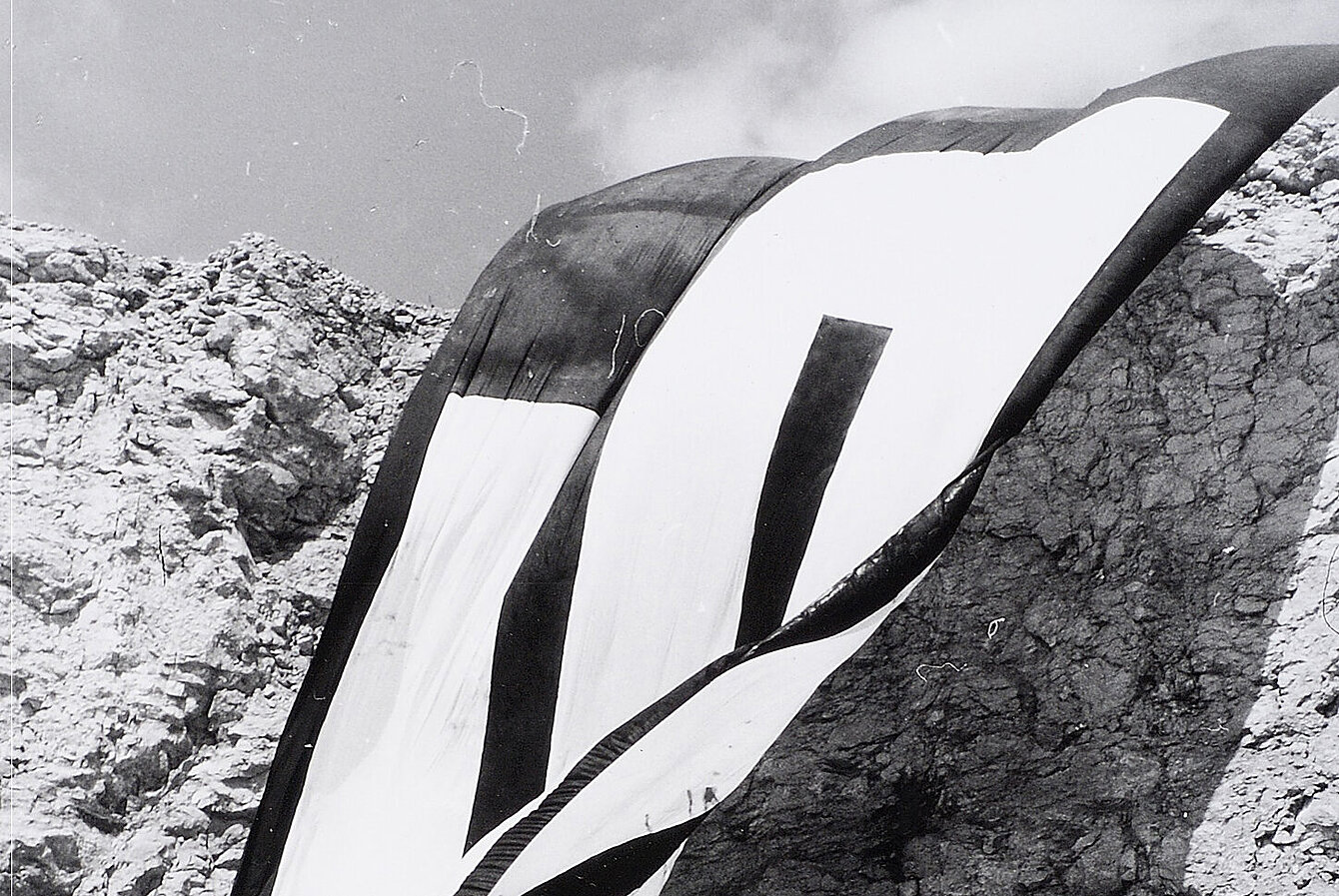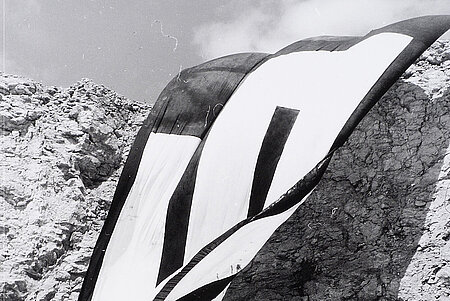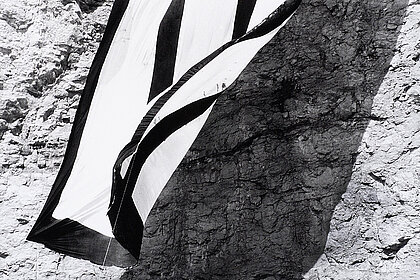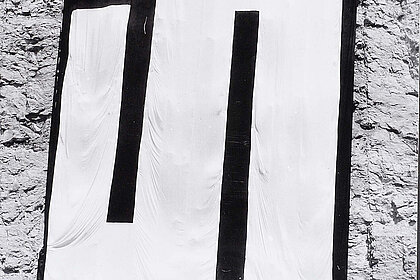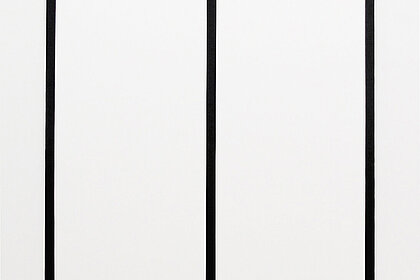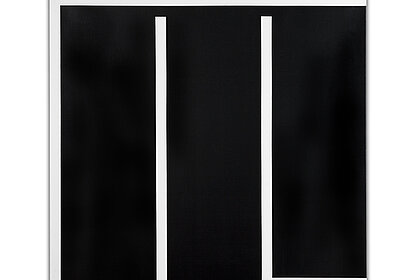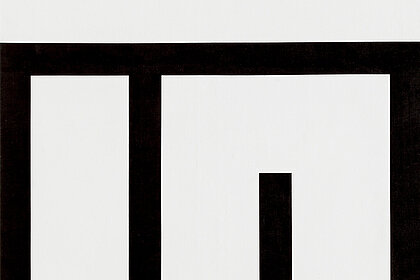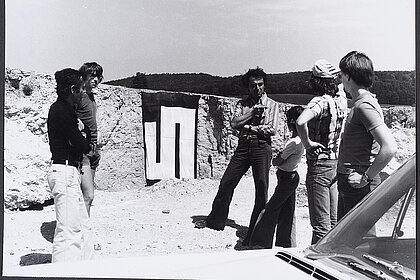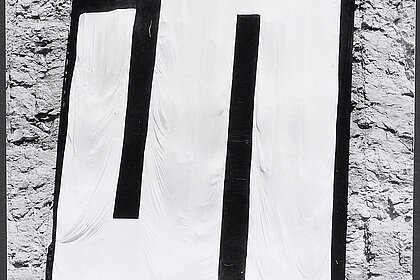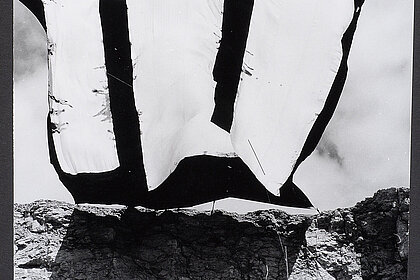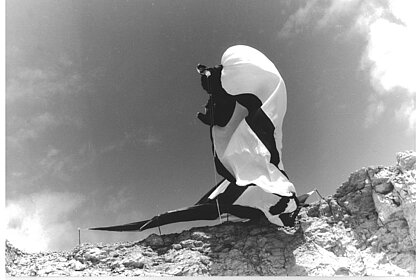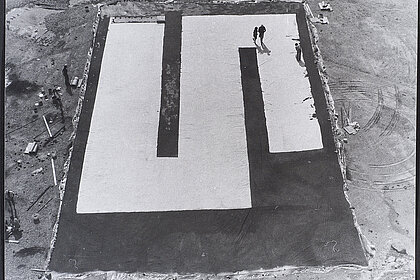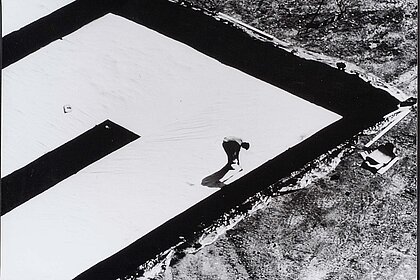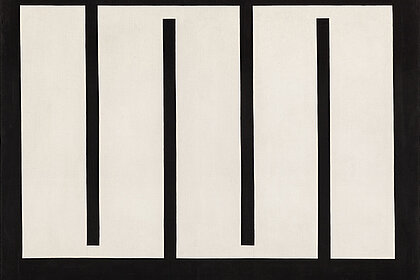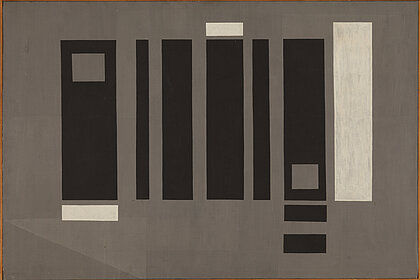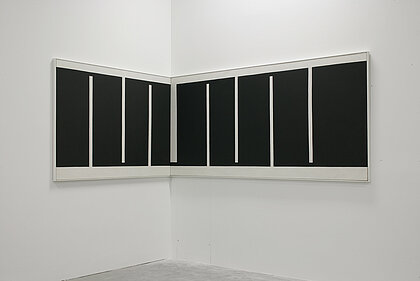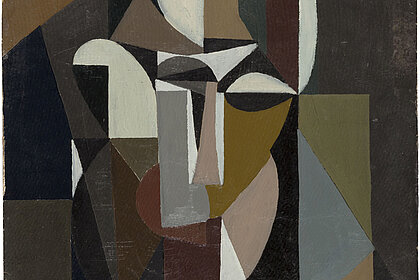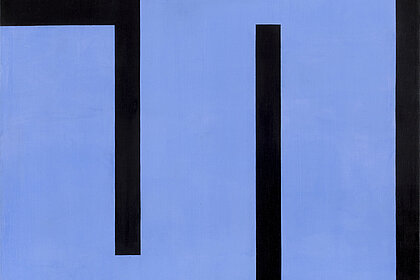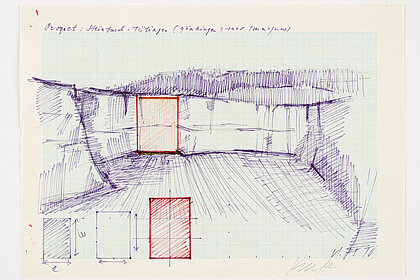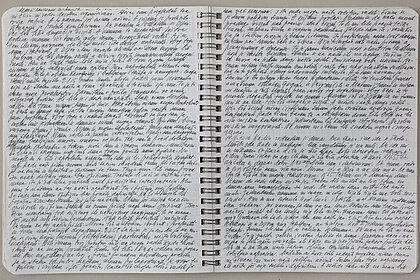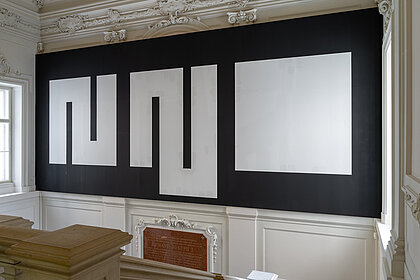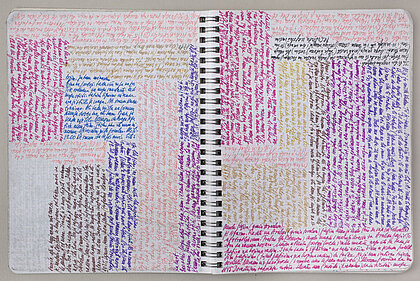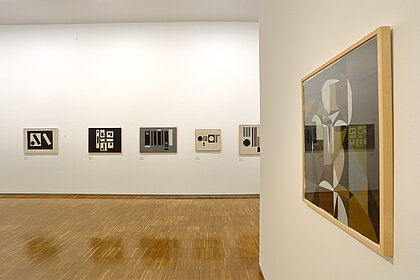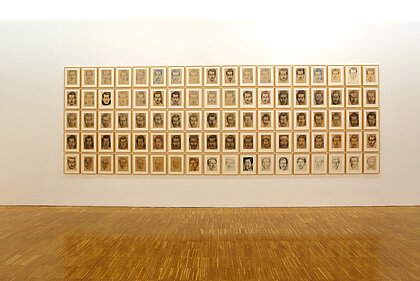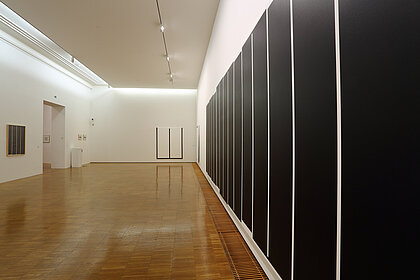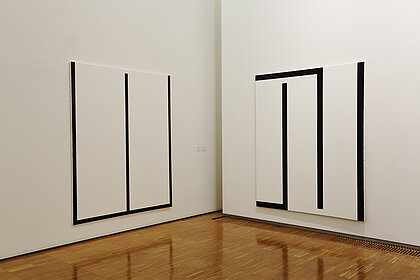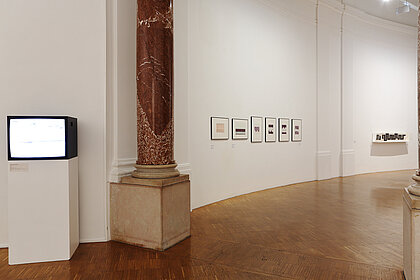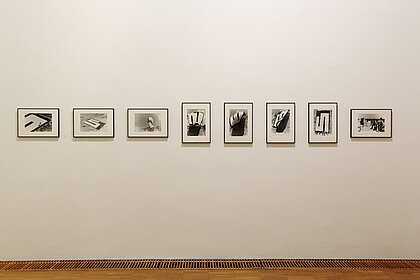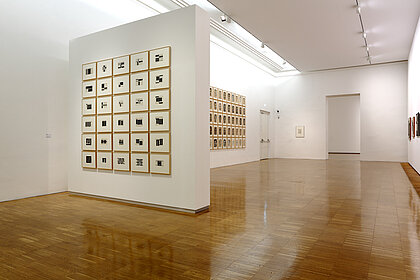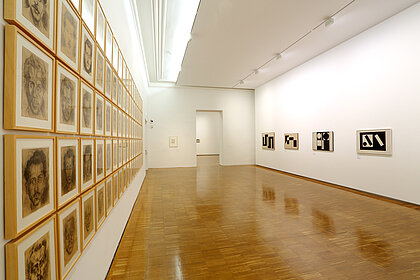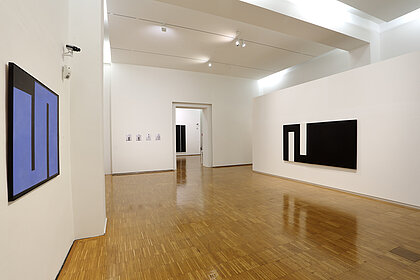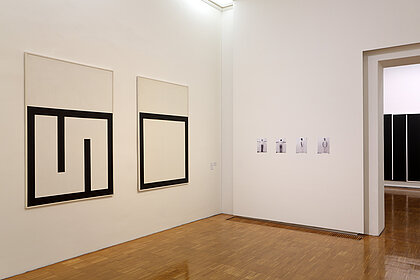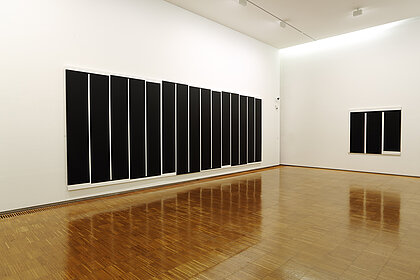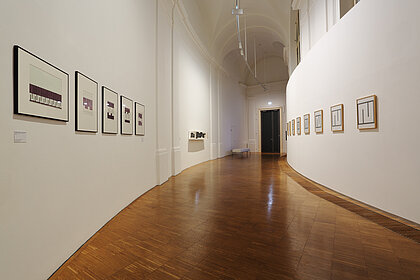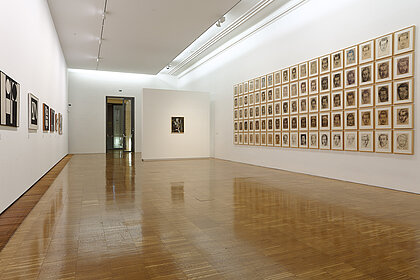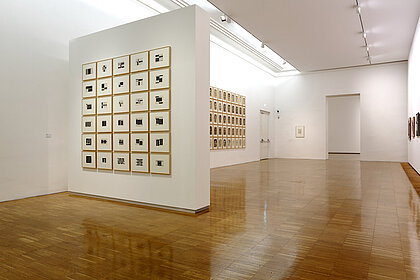‘I’ve probably already created my last pictures, just maybe not my first ones.’
Julije Knifer
Julije Knifer (1924 Osijek – 2004 Paris) is among the most prominent international artists post-1945. With his significant meander pictures, he created icons of contemporary art, exhibiting at numerous important places throughout the world. Drawing on constructivist traditions of the Nove Tendencije and in the aftermath of the post-expressive, conceptual-minimalist trends in painting in Europe and the United States in the 1950s, Knifer arrived at his defining motif around 1960 with his meander paintings.
His basic intention being to create an ‘anti-picture’ through the process of extreme reduction of forms and content, Knifer aimed at expressive possibilities of the absurd as a means of questioning, in part provocatively, the traditional value systems of art and the normative values corresponding to them in post-war society. This intention was entirely in the spirit of the loosely affiliated artists’ collective, the Gorgona Group (1959‒1966), which he co-founded. Thus, Knifer and Gorgona bear comparison with such contemporaries as the representatives of the Fluxus movement or the protagonists of Viennese actionist art of the 1960s. Like these artists and many others of the post-war avant-garde and intelligentsia, Knifer saw art as having arrived at a turning point following the events of the world war, one that rendered impossible an uncritical continuation of traditional directions. The idea of the ‘anti-picture’ is due not least of all to this situation. The notion of creating pictures ‘without identity’, or – another proposition of Knifer’s – to strive for the ‘complete disappearance of the picture’ through his art, can also be understood in the general context of contemporary ideas relating to critical engagement with the medium of painting. For Knifer, the element of repetition in the work on the meander pictures, which stretched in part over months and which also included powerfully meditative elements, meant a ‘very particular form of freedom (…), my whole working process is actually a flow without waves, with the aim of achieving monotony, which is the simplest and most defined rhythm.’
Knifer was represented with exhibitions in the most important institutions of international contemporary art, and his works can be found in the exclusive private and museum collections, such as in the MoMA in New York and in the Centre Pompidou collection in Paris, where Knifer spent a large part of his life, too. Julije Knifer is connected to Graz through his participation in the trigon 77 exhibition, which ran with the theme of TheCreative Process. The Neue Galerie Graz collection owns, among other things, several works by the artist from this period, as well as a documentary of the sensational action titled Working Process Tübingen from 1975, in which a monumental-sized meander was unrolled in an abandoned quarry.
The retrospective Julije Knifer. Uncompromising covers a wide spectrum of the artist’s comprehensive body of work. Beginning with Knifer’s earliest works from the late 1940s, in which the artist sought his path to the ideal picture or ‘anti-picture’ in numerous formal experiments that drew from the achievement of Modernism, the show continues through the intensive unfolding of the meander motif from around 1960, up to the late works of the 1990s.
The exhibition in the Neue Galerie Graz takes place in cooperation with the Muzej Suvremene Umjetnosti (MSU)/Museum for Modern and Contemporary Art, Zagreb, and, alongside the works held by the Zagreb museum, presents numerous loan items from private owners, too. The exhibition was originally meant to run in the first half-year of 2020, but has had to be postponed due to the Covid-19 pandemic.




















